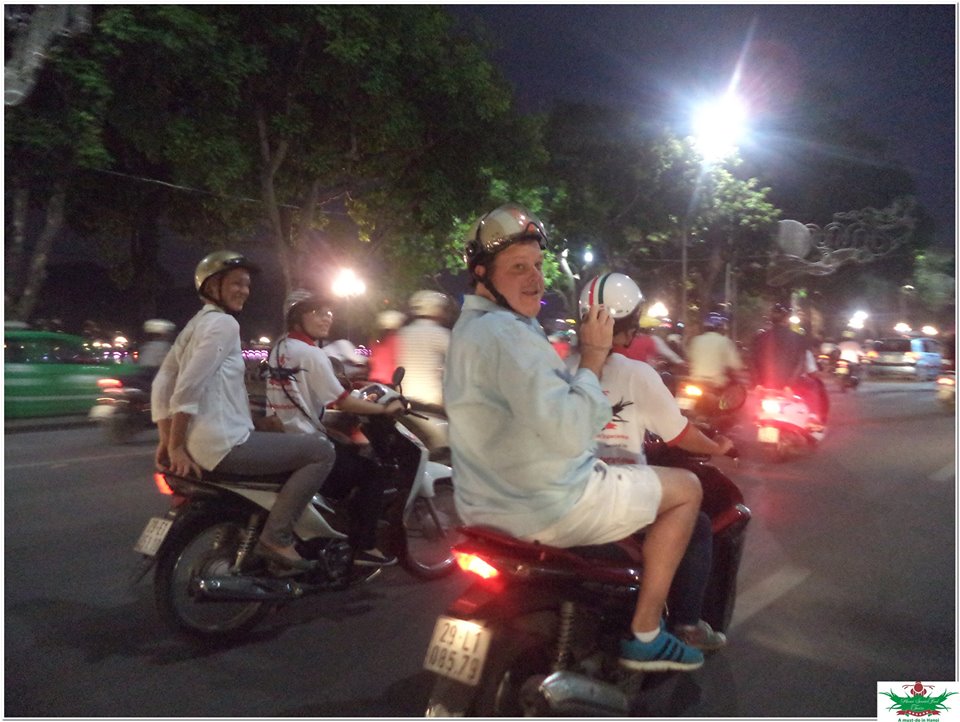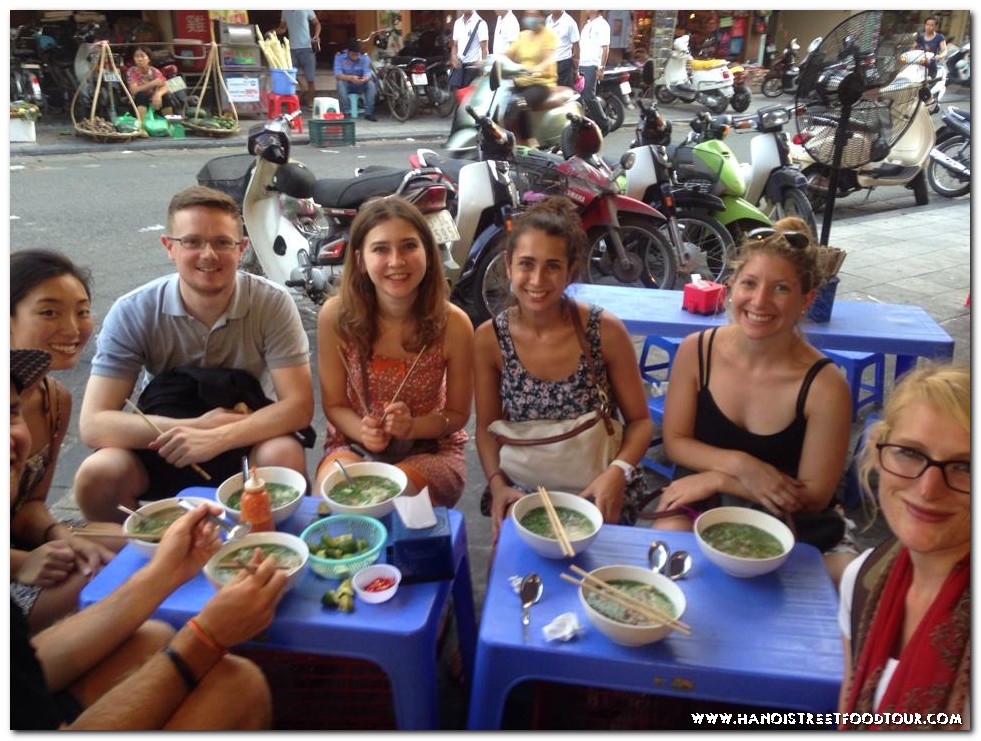Tour Code: HMPCT01
Departure time at any time your wanted from 7h30 AM to 19h00
Type: Group size: From 01 persons
We create this tour for your group only for three hours and more by Mopeds to visit any attraction's sights, shops and places inside city. You are free to choose your visited places wanted and tell us to set up your tour.
Some famous travel attraction in Hanoi
Ho Chi Minh Complex
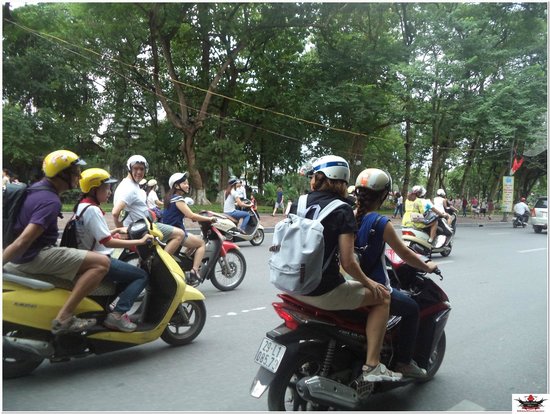 Who is Ho Chi Minh?
Who is Ho Chi Minh?
Ho Chi Minh is the great father of Vietnam, who dedicated his life to save the country from invaders. Ho Chi Minh was born in 1890. By the time being a teenager, Ho Chi Minh shared his father’s views – that Vietnam had a right to govern itself free of colonial rule. Under his leading, Vietnamese people was successful in fighting against the French occupation and had our own independence, when he became the first president of Vietnam.Respecting his dedications, from the bottom of all Vietnamese people, he was regarded as the Great father or was called as Uncle Ho.
Ba Dinh Square
The square was originally developed by French colony and known as Round Point Pugininer was renamed in 1945. Ba Dinh square, where Ho Chi Minh’s Mausoleum lies, is a historical site where President Ho Chi Minh read the Independence Declaration of Vietnam on September 2nd, 1945.
With its large size, Ba Dinh square can contains up to 200,000 people, with 168 sq. meters of green and fresh grass.
Nowadays, the square is one of the rare areas covered with green glass in urban Hanoi. Many important events such as parades and commemoration of veterans take place at the square.
Ho Chi Minh Museum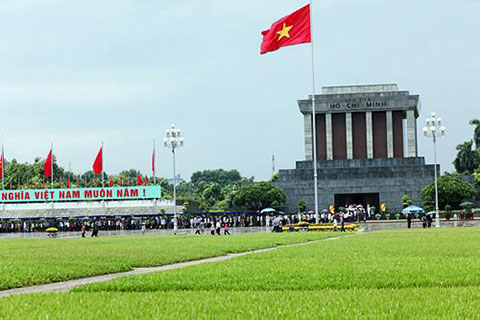 The Ho Chi Minh Museum in Hanoi is the preserver of everything memorable related to the great revolutionist, Ho Chi Minh. The Museum was started opening on 2nd September, 1990, celebrating the 100th birthday occasion of Ho Chi Minh.
The Ho Chi Minh Museum in Hanoi is the preserver of everything memorable related to the great revolutionist, Ho Chi Minh. The Museum was started opening on 2nd September, 1990, celebrating the 100th birthday occasion of Ho Chi Minh.
Ho Chi Minh Museum in Hanoi includes extensive floors and the best way to explore the Museum is start visiting from up to down. The museum has a priceless collection of military orders, mementos, photos of the Communist Party's earlier achievements, the great August and October revolutions, exhibits related to Ho Chi Minh's political activities, etc. Especially, the Museum is also an example of the Soviet architecture and so the visitors can have chances to enjoy both the exhibits and structure in this place.
Presidential Palace
Presidential Palace was designed by supervised a German architect for a French Indochina Governor and was completed 1906. That is the most fussy and expensive construction at that time. This building had 400 rooms and named Indochina Governor Palace.
In 1945, when Vietnam again had independence, it was recalled the Presidential Palace. Although Uncle Ho was supposed to lived and worked, he refused to live in this luxurious building. He said it was totally unsuitable for his poor and starving people. In 1954, Ho Chi Minh came back to Hanoi and just stayed at a small house in this garden(House No.54).
Ho Chi Minh mausoleum
Ho Chi Minh Mausoleum was formally inaugurated on August 29, 1975. The mausoleum was inspired by Lenin's Mausoleum in Moscow but still based mainly on the foundation of the distinct Vietnamese architectural elements. The mausoleum's portico has the words "Chủ tịch Hồ Chí Minh" inscribed across it, meaning "President Ho Chi Minh."
In facts, Ho Chi Minh asked for a simple funeral but when he died, compliance with the Vietnamese people’s expectations, the Vietnamese government decided to remain his dead body, and a project of a mausoleum was ensured seriously. The structure is 21.6 metres high and 41.2 metres wide. The gardens surrounding the mausoleum have nearly 250 different species of plants and flowers, all from different regions of Vietnam
One Pillar pagoda
The pagoda was built in 1049, under the reign of Ly Thai Tong. But at that time, it was a group of structures consisting of a pagoda and a tower built in the middle of a square lake with the literally meaning: “long lasting happiness and good luck. This unique architecture was based on an interesting reason. Building a pillar in the middle of a lotus pond, and a temple of lotus-shape, that reflected what Ly Thai Tong saw in the dream. One Pillar pagoda with the special story has been attracting hundreds of thousands of international tourists!
The Temple of Literature is about 10 minutes away from Hoan Kiem lake. It was constructed in 1070 under Ly Thanh Tong’s dynasty, first to honor Confucius and nowadays to celebrate the doctorates and high rank scholars of Vietnam. In 1076, King Ly Nhan Tong continued the work and built Quoc Tu Giam as the first university of Vietnam.
History
The Temple of Literature is about 10 minutes away from Hoan Kiem lake. It was constructed in 1070 under Ly Thanh Tong’s dynasty, first to honor Confucius and nowadays to celebrate the doctorates and high rank scholars of Vietnam. In 1076, King Ly Nhan Tong continued the work and built Quoc Tu Giam as the first university of Vietnam.
Structure
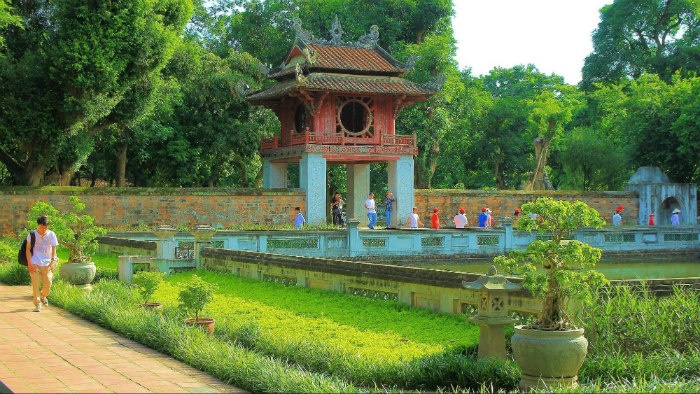 The temple is divided into five court yard, each with its own significance and history. The first courtyard stretches from the main gate to Dai Trung gate; the second stands out with Khue Van Cac pavilion. If you notice well, you will find the pavilion symbol on all street signs of Hanoi. The third courtyard is where doctor names was listed on a tombstone above tortoise backs.
The temple is divided into five court yard, each with its own significance and history. The first courtyard stretches from the main gate to Dai Trung gate; the second stands out with Khue Van Cac pavilion. If you notice well, you will find the pavilion symbol on all street signs of Hanoi. The third courtyard is where doctor names was listed on a tombstone above tortoise backs.
There are a total of 82 tombstones, with names and origins of 1307 doctors, corresponding to 82 examination courses from 1442 to 1779. If you visit the temple at the beginning of the year or in May when many important examinations take place, you will catch sights of numerous students who come and rub the tortoise head. Such an act is believed to bring them luck to pass the test.
The fourth courtyard is dedicated for Confucius and his 72 honoured students, as well as Chu Van An- a famous teachers known for his devotion to teaching. This is also where local authorities choose to cherish brilliant students in Hanoi, like those with top entrance results to university or top graduation outcomes. The last and also furthest courtyard is Thai Hoc house, which used to be Quoc Tu Giam- the first university of Vietnam. Thai Hoc house holds a small collection of old time costumes for students and mandarins, as well as explaining the process of taking and passing the national examination.
If you are keen on architecture, Temple of literature has one of the most typical architecture style for centuries in Vietnam, composed of wood and tiles. Along the pass way is hundred-year-old trees that have witnessed ups and downs of history.



